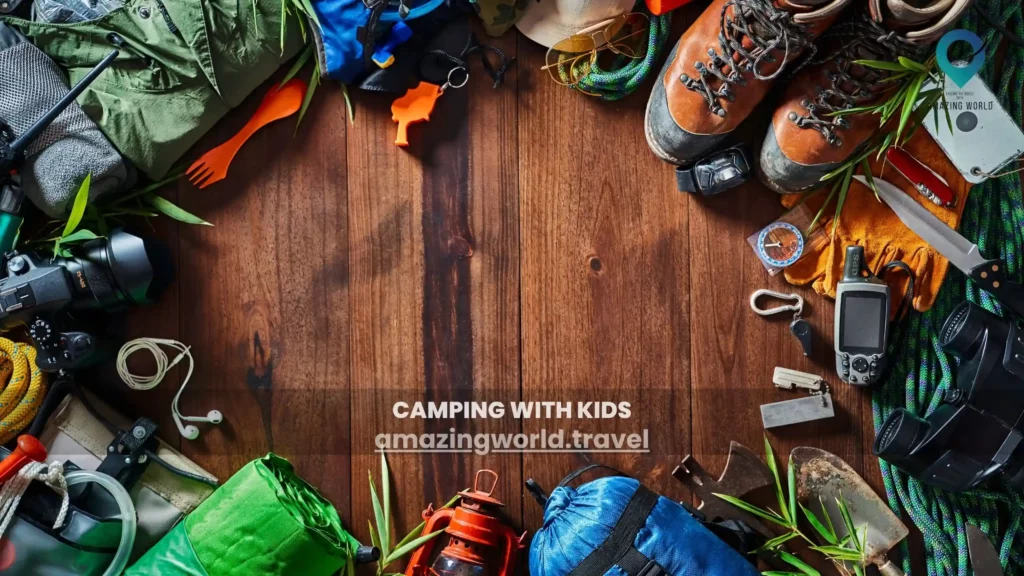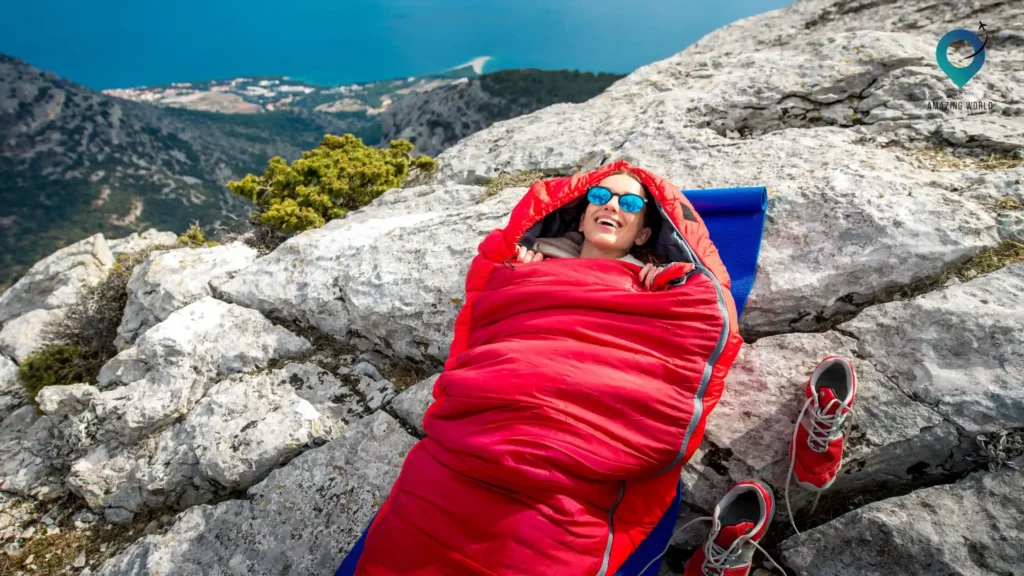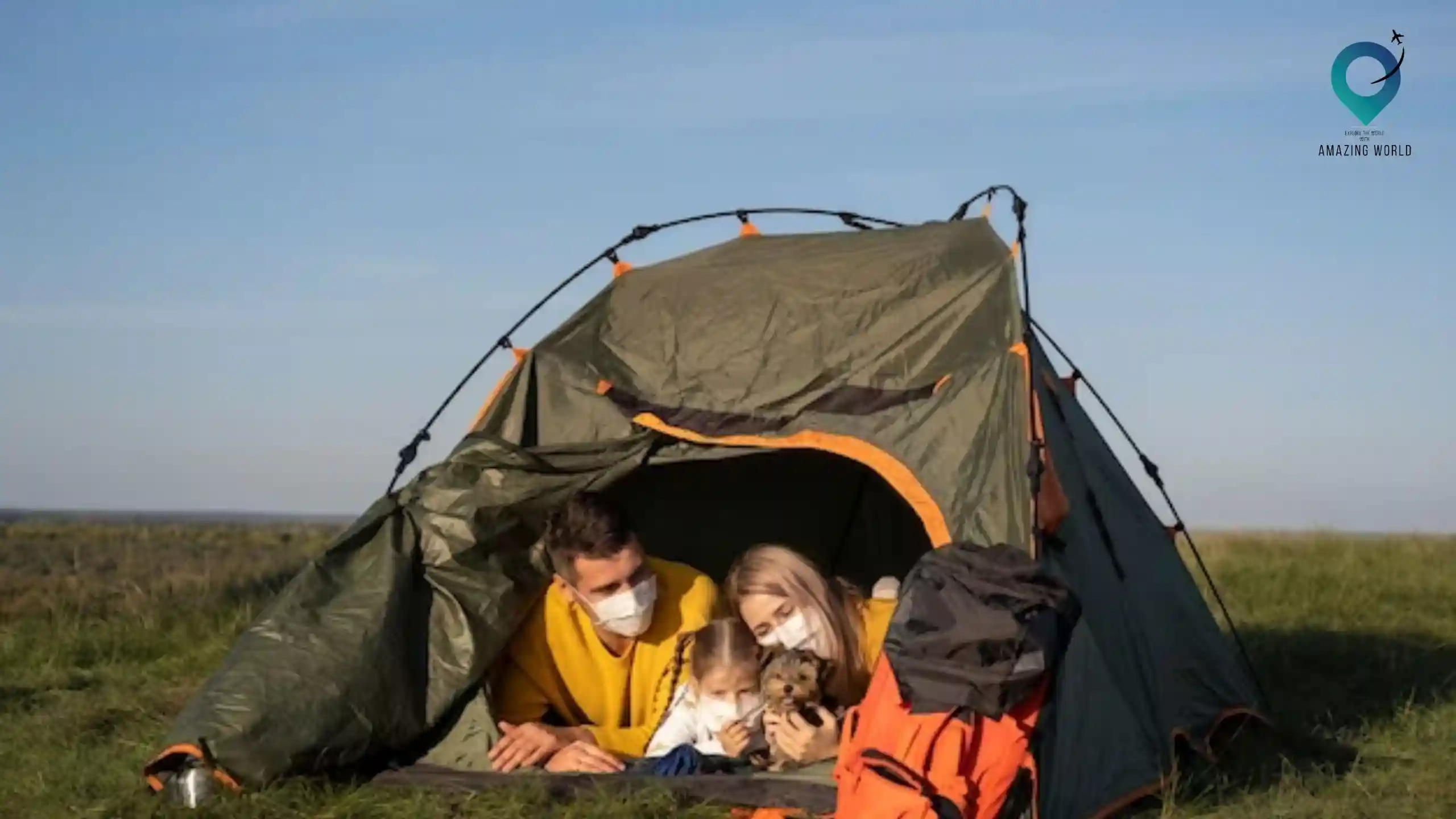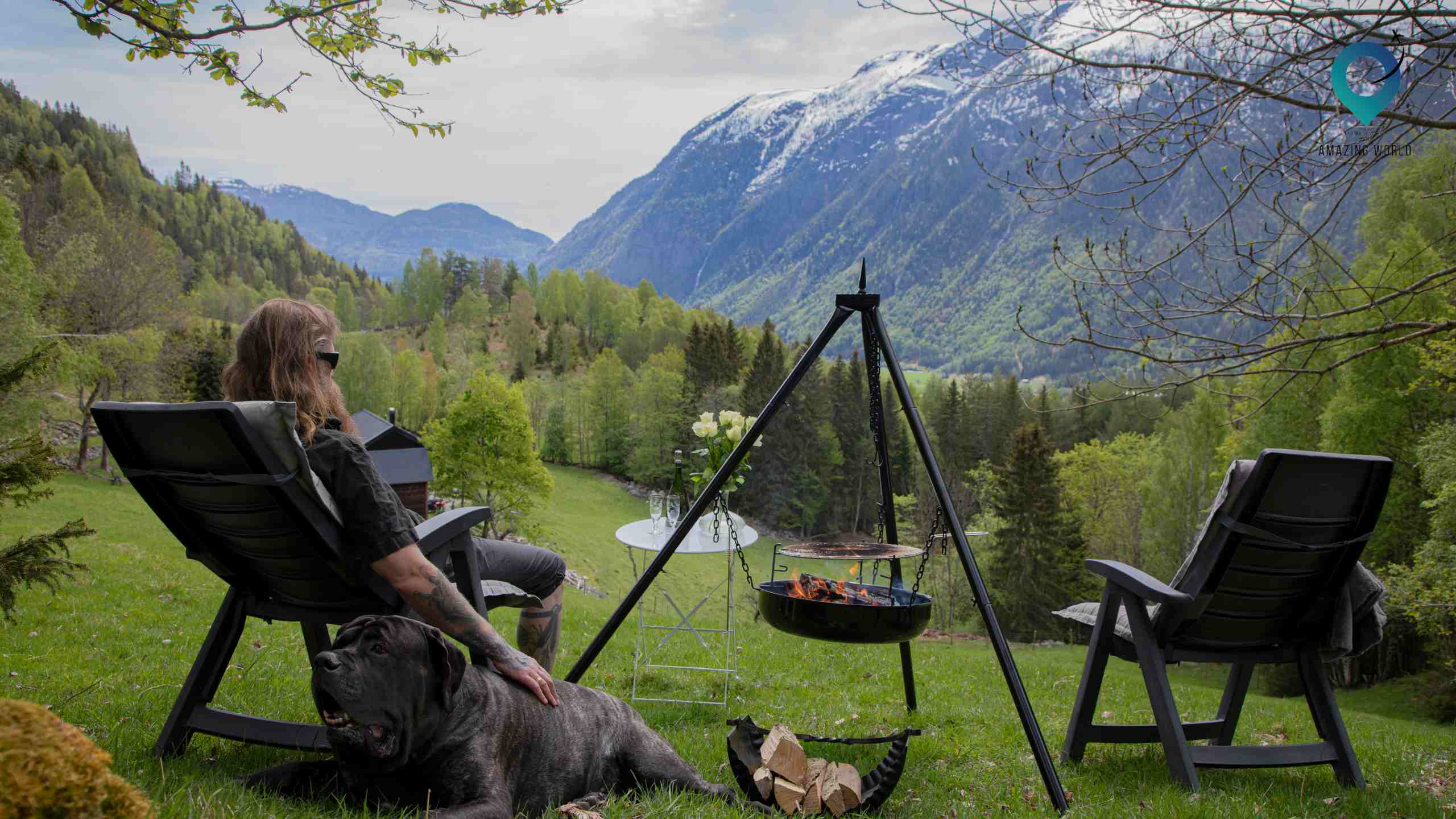Ultimate Camping Gear Checklist for 2023 | Must-Have Essentials

Are you ready to embark on a thrilling outdoor escapade in 2023? As nature beckons with its pristine landscapes and starlit skies, it’s time to prepare for an unforgettable camping journey. While the great outdoors promises adventure and serenity, ensuring you’re equipped with the right gear can make all the difference in turning your camping experience into a seamless and enjoyable one.
In this comprehensive camping gear checklist for 2023, we’ll guide you through the must-have essentials that are bound to elevate your camping trip. From shelter and cooking gear to hygiene and safety items, we’ve got you covered every step of the way. Whether you’re a seasoned camper or venturing into the wilderness for the first time, our detailed breakdown will ensure you’re well-prepared for whatever Mother Nature has in store.
Stay tuned as we delve into the intricacies of choosing the perfect tent that becomes your cozy abode, uncover the magic of versatile tools that transform you into a camping MacGyver, and explore the creature comforts that turn your campsite into a home away from home. But it doesn’t stop there – we’ll also provide insights into hygiene and medical essentials that prioritize your well-being amidst the elements.
As you set off on your 2023 camping adventure, remember that the right gear isn’t just about ticking boxes; it’s about crafting lasting memories, fostering connections with nature, and embracing the thrill of the unknown. So, pack your enthusiasm, load up on knowledge, and get ready to experience the great outdoors like never before.
Campsite Essentials

| Campsite Essentials | Details |
| Tent (with footprint, stakes, and hammer) | Your home away from home. Make sure it’s spacious and weather-resistant. |
| Sleeping Bags | Choose ones with the appropriate temperature rating for your destination. |
| Cooking & Eating Essentials | |
| Stove, Fuel, and Lighter | For preparing hot and delicious meals. |
| Cook Pots, Frying Pan, and Pot Holder | Cookware essentials for your outdoor kitchen. |
| Spatula, Whisk, and Knife | Utensils for preparing and cooking food. |
| Cutting Board | A sanitary surface for meal prep. |
| Bottle Opener, Corkscrew, and Can Opener | Tools for opening bottles, wine, and canned goods. |
| Food-Storage Containers, Bags, and Foil | Keep your food fresh and organized. |
| Pot Scrubber/Sponge and Biodegradable Soap | Cleaning supplies for after meals. |
| Cooler(s) and Ice | Keep perishables cold and beverages refreshing. |
| Optional Comforts | |
| Camp Chairs or Folding Chairs | Relax around the campfire in comfortable seating. |
| Camp Pillows | Enhance your sleeping experience with a dedicated camping pillow. |
| Electric Lantern | A reliable light source for your campsite. |
| Water Bottles | Stay hydrated during your outdoor activities. |
| Plates, Bowls, Mugs/Cups, Utensils | Enjoy your meals with proper eating utensils. |
| Kitchen Towel | Useful for wiping hands and cleaning. |
| Trash Bags | Pack out all your trash to leave no trace. |
| Hygiene & Medical Essentials | |
| Toilet Paper | Campgrounds can run out, so it’s wise to bring your own. |
| Hand Sanitizer | Maintain hygiene even in the wilderness. |
| Small Bath Towel | For personal hygiene and cleaning. |
| Menstrual Supplies | As needed for a comfortable experience. |
| First-Aid Kit | Be prepared for minor injuries and ailments. |
| Sunscreen | Protect your skin from the sun’s rays. |
| Insect Repellent | Ward off pesky insects and bugs. |
| Prescription Medications | Remember to bring any required medications. |
Tent (with footprint, stakes, and hammer)
Your choice of tent can significantly impact your camping experience. It’s more than just a place to sleep – it’s your shelter, your refuge from the elements, and the hub for bonding with fellow campers. Here’s a breakdown of what to consider:
- Tent Selection: Select a tent that accommodates your group size comfortably. A tent labeled as a “4-person tent” usually fits 2 to 3 people with gear. Consider going slightly larger for added space.
- Weather Resistance: Look for a tent made from durable, weather-resistant materials. It should withstand rain, wind, and possibly even snow. A rainfly is essential to keep water out.
- Footprint: A footprint is a ground tarp that goes under your tent. It adds an extra layer of protection against moisture and abrasions, extending the life of your tent.
- Stakes and Hammer: Stakes anchor your tent to the ground. Ensure you have enough stakes for all the tent’s attachment points. A lightweight hammer or mallet helps you secure stakes into the ground.
- Easy Setup: Consider the ease of setting up the tent. Some tents come with color-coded poles and straightforward assembly instructions.
- Spaciousness: Opt for a tent that offers not just sleeping space, but also room for your gear. Vestibules or storage pockets are helpful for keeping your items organized.
Sleeping Bags

A good night’s sleep is essential for an enjoyable camping trip. Your choice of sleeping bags can mean the difference between waking up refreshed and feeling like you slept on a bed of rocks. Here’s what to look for:
- Temperature Ratings: Sleeping bags come with temperature ratings indicating the lowest temperature at which you’ll stay warm. Choose a bag rated slightly below the lowest temperature you expect to encounter.
- Seasonal Suitability: Consider the season and climate of your camping destination. A summer bag won’t suffice in cold weather, and an insulated bag may be overkill in warmer conditions.
- Material and Insulation: Down and synthetic are the primary insulation choices. Down is lightweight and compressible but loses insulation when wet. Synthetic retains warmth even when damp and dries faster.
- Bag Shape: Sleeping bags come in mummy or rectangular shapes. Mummy bags are more thermally efficient, while rectangular bags offer more room to move.
- Zipper and Ventilation: Check the zipper quality and location. Some bags offer zippers along the sides for ventilation. Some bags also have a secondary zipper at the feet for extra ventilation on warmer nights.
- Length and Fit: Choose a bag that fits your height. Most bags come in regular and long lengths. A well-fitting bag prevents cold air from entering and warm air from escaping.
- Packability: Consider how compact the sleeping bag is when packed. Compression sacks can help reduce the size of the bag for easier transport.
Sleeping Pads
A good night’s sleep isn’t just about having a cozy sleeping bag; it’s also about what’s underneath you. Sleeping pads offer a layer of comfort and insulation from the cold ground. Here’s why they’re essential:
- Insulation: The ground can absorb your body heat, leaving you shivering during the night. A sleeping pad provides an insulating barrier that keeps your body heat from escaping into the ground.
- Comfort: Even if you have a comfortable sleeping bag, uneven terrain can be uncomfortable to sleep on. Sleeping pads provide a cushioned surface that evens out the ground’s bumps and rocks.
- Types: There are two main types of sleeping pads: inflatable and foam. Inflatable pads are lightweight and pack down small, while foam pads are durable and don’t require inflation.
- R-value: This value indicates a pad’s insulation ability. The higher the R-value, the better the pad insulates against cold ground. Choose a pad with an appropriate R-value for the expected temperatures.
- Size and Shape: Sleeping pads come in various sizes and shapes. Consider the dimensions that best suit your body and tent. Some pads are tapered to save weight and space.
Headlamps or Flashlights (with extra batteries)
Navigating in the dark is an inevitable part of camping. Whether you’re searching for the bathroom at night, reading in your tent, or exploring after sunset, reliable lighting is crucial. Here’s why headlamps or flashlights are must-have items:
- Hands-Free Convenience: Headlamps offer the advantage of hands-free lighting. They’re particularly useful when you’re setting up your tent, cooking, or performing other tasks that require both hands.
- Versatility: A good headlamp or flashlight provides a focused beam for tasks that require precision and a broader beam for general visibility. Some models even have adjustable brightness settings.
- Safety: Proper lighting enhances safety in the wilderness. It helps you avoid obstacles, identify potential hazards, and signal for help if needed.
- Extra Batteries: Always carry extra batteries for your lighting devices. Batteries can drain unexpectedly, and having spares ensures you’re not left in the dark during a critical moment.
Folding Table
A folding table might seem like a luxury, but it’s a game-changer when it comes to organizing your campsite and preparing meals. Here’s why you might want to consider bringing one:
- Meal Preparation: Having a stable surface for meal preparation makes cooking much more efficient and enjoyable. It prevents your cooking gear and ingredients from getting dirty on the ground.
- Eating Comfort: Eating at a table is far more comfortable than balancing your plate on your lap or eating on the ground. It also keeps your food away from curious wildlife.
- Storage and Organization: A folding table provides a designated space for items like cookware, utensils, and food containers. This organization makes your campsite more orderly and reduces the risk of misplacing things.
- Social Space: A table can be the gathering spot for campsite conversations, card games, and shared meals. It enhances the social aspect of camping.
- Compact and Portable: Modern folding tables are designed to be lightweight and easy to transport. They fold down to a compact size, making them convenient to carry and store.
Swiss Army Knife or Multi-Tool
When it comes to versatile tools for your camping adventure, few items can match the utility of a Swiss Army Knife or a multi-tool. These compact and multi-functional gadgets are like having a toolbox in your pocket. Here’s why including one in your camping gear is a smart choice:
- Versatility: A Swiss Army Knife or multi-tool packs an impressive array of functions into a single device. From cutting and slicing to screwing and opening bottles, these tools are designed to handle various tasks.
- Space and Weight Efficiency: Instead of carrying multiple individual tools, a Swiss Army Knife or multi-tool combines several functions in a compact form. This saves valuable space in your backpack and reduces weight.
- Campsite Chores: Need to tighten tent stakes, cut rope, or open food packages? These tools have you covered. They’re perfect for a wide range of tasks around the campsite.
- Cooking Prep: Whether you need to open cans, peel fruits, or prep ingredients, a multi-tool’s knife and other attachments make food preparation easier.
- Emergency Situations: In unexpected situations, having a versatile tool can be a lifesaver. From creating makeshift repairs to tending to minor injuries, a Swiss Army Knife or multi-tool is incredibly handy.
- Durability: These tools are built to withstand outdoor conditions. They’re often made from high-quality stainless steel, ensuring they hold up even in rugged environments.
- Convenience: With a Swiss Army Knife or multi-tool easily accessible in your pocket or attached to your belt, you have a tool at your fingertips whenever you need it.
- Camping and Beyond: The utility of a Swiss Army Knife or multi-tool extends beyond camping. It’s a valuable tool for hiking, backpacking, fishing trips, and everyday tasks at home.
When selecting a Swiss Army Knife or multi-tool, consider the range of functions it offers, its build quality, and how well it suits your specific needs. With its compact design and multifunctional capabilities, this tool is sure to become an indispensable part of your camping adventures.
Cooking & Eating Essentials
Preparing and enjoying delicious meals while camping can be a delightful experience. To ensure you have everything you need for your outdoor kitchen, let’s break down each essential item:
- Stove, Fuel, and Lighter: A reliable camping stove is the heart of your outdoor kitchen. Choose a stove that suits your cooking needs, whether it’s a compact backpacking stove or a larger propane stove for group camping. Don’t forget the appropriate fuel and a backup lighter in case of emergencies.
- Cook Pots, Frying Pan, and Pot Holder: Your cookware selection depends on the type of meals you plan to prepare. A set of nesting pots and pans is versatile and space-saving. A pot holder or gripper ensures safe handling of hot cookware.
- Spatula, Whisk, and Knife: These utensils are essential for food preparation. A spatula helps flip pancakes and eggs, a whisk is great for mixing batter, and a sharp knife handles chopping and slicing tasks.
- Cutting Board: Maintaining hygiene while cooking is vital. A small, lightweight cutting board provides a clean and sanitary surface for chopping ingredients.
- Bottle Opener, Corkscrew, and Can Opener: These tools are often overlooked but can make a big difference in your camping experience. They’re necessary for opening bottles, wine bottles with corks, and canned goods.
- Food-Storage Containers, Bags, and Foil: Properly storing your food prevents spoilage and keeps your campsite critter-free. Use a combination of food storage containers, resealable bags, and aluminum foil for different types of items.
- Pot Scrubber/Sponge and Biodegradable Soap: After enjoying your meals, maintaining cleanliness is crucial. A pot scrubber or sponge, along with biodegradable soap, allows you to clean your cookware and utensils effectively without harming the environment.
- Cooler(s) and Ice: If your camping trip involves perishable foods and beverages, a cooler is a must. Choose a cooler with sufficient capacity and consider using separate coolers for food and drinks. Pack ice packs or blocks to keep everything cold and fresh.
With these cooking and eating essentials, you’ll be well-equipped to prepare and enjoy satisfying meals during your camping adventure. Keep in mind the types of meals you plan to cook, the number of campers, and the available storage space when selecting your cooking gear.
Optional Comforts
While camping is all about embracing the outdoors, adding a touch of comfort can make your experience even more enjoyable. Here’s a closer look at these optional comfort items:
- Camp Chairs or Folding Chairs: After a day of hiking, exploring, or simply being active, having a comfortable place to sit and relax is a game-changer. Camp chairs provide a cozy spot around the campfire, allowing you to unwind and connect with fellow campers.
- Camp Pillows: Enhancing your sleeping setup, especially when it comes to comfort, can significantly impact your overall camping experience. Camp pillows are designed to provide neck support and ensure you wake up well-rested and ready for the day.
- Electric Lantern: While headlamps and flashlights are essential for personal lighting, an electric lantern serves as a reliable and ambient light source for your entire campsite. It’s ideal for illuminating the area when you’re enjoying evening activities or sitting around the fire.
- Water Bottles: Staying hydrated is crucial while spending time outdoors. Carry durable water bottles that are easy to refill. Hydration not only keeps you energized but also helps regulate your body temperature in varying weather conditions.
- Plates, Bowls, Mugs/Cups, Utensils: Eating outdoors doesn’t mean you have to compromise on proper tableware. Lightweight and durable plates, bowls, mugs, cups, and utensils ensure you can enjoy your meals comfortably and without hassle.
- Kitchen Towel: Maintaining cleanliness in your camp kitchen is essential for food safety and a pleasant experience. A kitchen towel comes in handy for wiping hands, cleaning utensils, and tidying up surfaces.
- Trash Bags: One of the fundamental principles of responsible camping is leaving no trace. Carrying trash bags ensures you can pack out all your waste, minimizing your impact on the environment and leaving the natural beauty of the wilderness intact.
Remember, while these comfort items are optional, they can greatly enhance your camping experience. Whether you’re looking to create a cozy campsite ambiance, ensure a good night’s sleep, or simply make mealtime more enjoyable, these items contribute to the overall quality of your adventure.
Hygiene & Medical Essentials
Maintaining good hygiene and being prepared for potential health concerns are crucial aspects of camping. Here’s a detailed look at the hygiene and medical essentials that should be part of your camping gear:
- Toilet Paper: While many campgrounds have facilities, they can run out of supplies. Bringing your own toilet paper ensures you’re prepared for nature’s call without any inconvenience.
- Hand Sanitizer: Camping may take you far from traditional handwashing stations. Hand sanitizer is a quick and convenient way to maintain hygiene, especially before meals and after using the restroom.
- Small Bath Towel: A small, quick-drying towel serves multiple purposes. It’s essential for personal hygiene, drying off after a swim, and cleaning up spills or messes.
- Menstrual Supplies: For those who menstruate, being prepared with the necessary supplies is crucial. Consider tampons, pads, menstrual cups, or any other products you’re comfortable with.
- First-Aid Kit: Accidents can happen, even in the great outdoors. A well-stocked first-aid kit is your go-to resource for treating minor injuries, cuts, scrapes, and other ailments.
- Sunscreen: Protecting your skin from the sun’s harmful rays is essential. Apply sunscreen before heading out and reapply throughout the day, especially if you’re engaging in outdoor activities.
- Insect Repellent: Ward off mosquitoes, ticks, and other pesky insects that can ruin your camping experience and potentially transmit diseases.
- Prescription Medications: If you take any prescription medications, ensure you have an ample supply for the duration of your camping trip. Keep them properly stored and easily accessible.
These hygiene and medical essentials not only contribute to your personal comfort but also play a crucial role in your well-being while camping. Being prepared for minor health concerns and maintaining good hygiene practices ensures you can fully enjoy your outdoor adventure.
Conclusion.
As your adventure-filled camping journey draws to a close, it’s time to reflect on the comprehensive gear checklist that has been your faithful companion throughout your outdoor escapade. From setting up a comfortable campsite to ensuring your safety, hygiene, and nourishment, each item on this list has played a pivotal role in enhancing your experience amidst nature’s grandeur.
As you pack up your gear, you can rest assured that the memories you’ve made, the challenges you’ve conquered, and the moments of awe you’ve experienced will remain etched in your heart. The crackling campfires, the rustling leaves, and the star-studded skies have woven a tapestry of moments that define the essence of camping.
Remember, beyond the checklist lies the spirit of exploration, the thrill of the unknown, and the connection with the natural world. Whether you’ve embarked on this journey solo, with friends, or with family, camping has a remarkable way of bringing people closer, forging bonds, and creating stories that will be shared for years to come.
As you head back to the hustle and bustle of daily life, carry with you the serenity of the wilderness, the lessons of self-sufficiency, and the rejuvenation that only nature can provide. Your camping gear may return to storage, but the experiences and lessons you’ve gained will continue to inspire your future adventures.
How much did you like Our detailed Ultimate Camping Gear Checklist for 2023 | Must-Have Essentials? Review Also, please share these Blogs with your friends on social media.
Related Article –

Meet David Hoper, a passionate travel Blog writer with 7+ years of experience in travel content. Through his exemplary storytelling and engaging narratives, he shares his experiences and brings destinations to life. With a keen eye for detail and a love for exploration, he has cultivated a diverse portfolio of travel blogs that inspire and inform readers worldwide.








